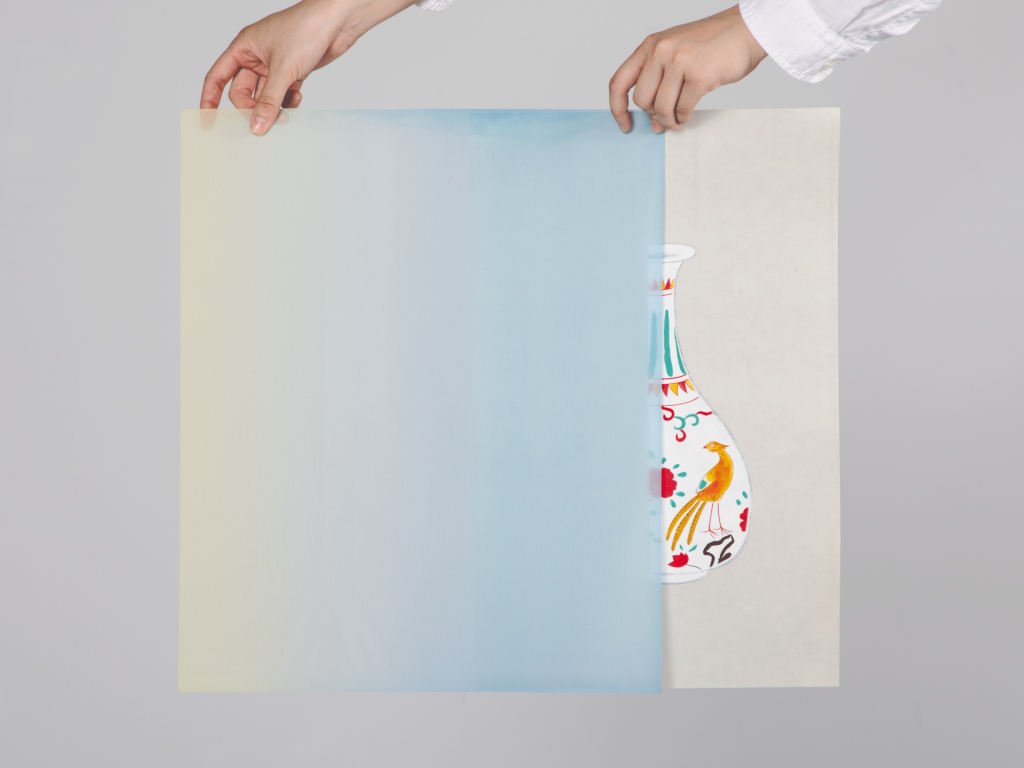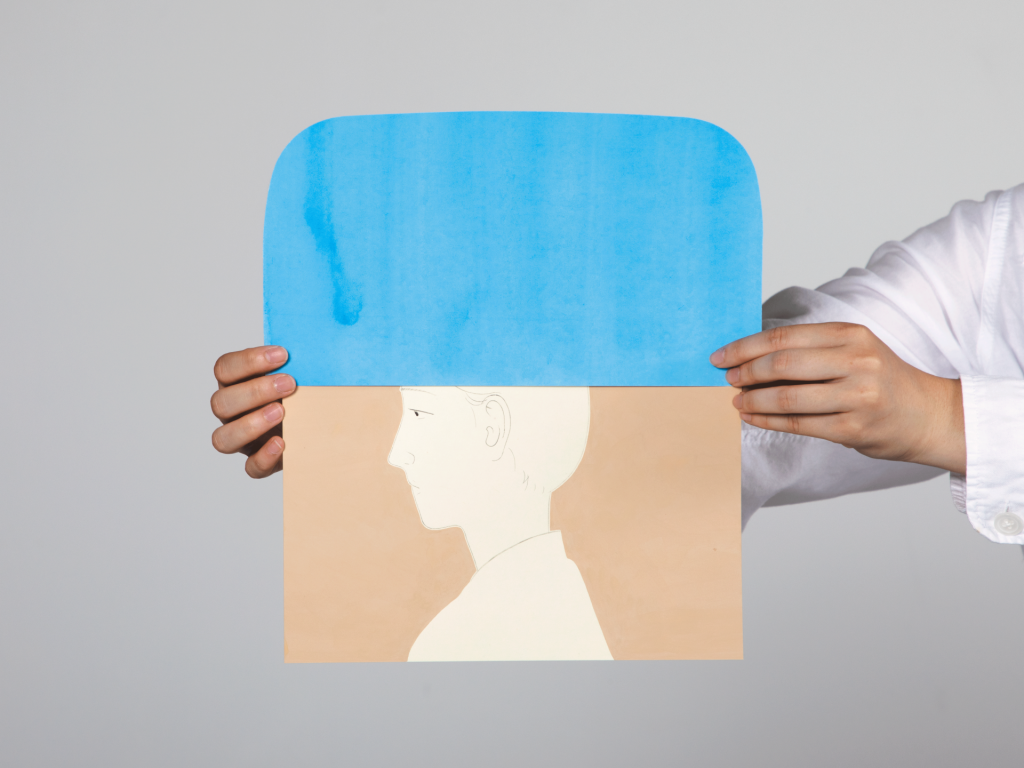EXHIBITIONS
Keisuke KONDO “The Hand and Hand of the Painting”
- Information
- Works
- DATE
- 2022-10-28 [Fri] - 2022-11-27 [Sun]
- OPEN TIME
- 11:00-19:00[wed-sat] 12:00-18:00[sun]
- CLOSE DAY
- Mon, Tue, National holidays
LOKO GALLERY will present Keisuke Kondo’s solo exhibition “The Hand and Hand of the Painting”.
At LOKO GALLERY, Kondo has previously shown his exhibition “Ten-Tan” (2019) and “Dan-dan-dan, Tan-tan-tan and Tale-tale-tales.” (2016) either of them in collaboration with novelist Hideo Furukawa. In these two exhibitions, the exhibited works were created under the process where Kondo left his unfinished drawings to be completed by Furukawa, through repetition of entrusting and intervention of time.
This time, Kondo aims to practice a conceptual collaboration with an inexistent being – as if this exhibition is a turning point from the previous physical, substantial exchanges – that may lead his works to present lines arising as a result of overcoming temporality.
In 2021, Kondo states at the beginning of his thesis “Table-Top Drawing, Amplitude of Lines” as follows:
“By understanding (interpreting) the creative process, mainly of Kokei Kobayashi, Yukihiko Yasuda, and Seison Maeda, I aim to observe the state of “the determined single line” arising from artists’ collaboration and demonstrate the potential of paintings in the present day.”
He also concludes that he “will take a creative process where the entire thesis will become an annotation.”
Though “The Hand and Hand of the Painting” tends to be a “solo” exhibition,
it holds secret anticipation that it might invite viewers to be part of the “collaboration”. Please welcome yourself into Kondo’s shrewdly planned scheme.
Slow drawer, Kokei
Draw a line on a paper with a writing material. The line extends toward the direction of where the hand moves to, left as a trace of movement on the paper, and makes us think of a linear idea of time in general.
Kokei Kobayashi, a Japanese painter who lived in the Meiji-Showa era was known as a slow painter through numerous episodes. Philosopher Tetsuzo Tanikawa, a close friend of Kokei reminisces, “It must have took 5 minutes in plenty for him to write his name consisting from four characters. Or maybe, 10 minutes.” It is obvious if you try it yourself, but it is very difficult to be a slow writer to take that much of time and takes considerable amount of patience.
Deigu Murata, an apprentice of Kokei who has once been invited to his studio and witnessed his creative process, recalls that he burst out from the room because “Kokei’s slowness of painting blue-green color on a single leaf made him feel suffocated”.Kokei has live this time. In his lines, rather than a linear idea of time accompanying physicality, there is a feel of boredom.
This hand
To draw slowly brings the body a considerable burden. It wears you up to keep the same posture and brings a Gestaltzerfall when you keep staring at the image or the letter about to be drawn for 5 or 10 minutes. The hand holding the pen could even forget what it is drawing. Even while drawing, the identity of the painter who is moving the pen at present becomes scattered and lost: However, the lines already existing on the plane, or the drawn forms makes the painter anew. In-between the process of the extremely slow drawing, the painter has already become a new painter unlike before. This could only happen when pressure occurs in the drawing process – No one could draw a line like Kokei unless they resign from physical easiness. In 2022, the time of Reiwa, I assume there is only quite a few that lives that sort of time, or should I say, even in the time of Kokei, there must not have been people who took several minutes to write their own names: Otherwise, this episode could not have become an anecdote. First of all, we should state this is undeniably amazing.Kokei called his ideal lines, those found in the Asuka-Tenpyo era (592-794) drawings “impassable lines”. He deconstructed his identity as a painter by drawing slowly, passed the initiative to the line, and attempted to liberate lines from time within time and space.So that’s the way!
Karibari
In Japanese painting, we call it “Karibari” to tentatively stretch the paper on the frame with a weak glue to stretch wrinkles and add tension to it to draw comfortably. “Kari (tentative)” leaves anticipation that it is expected to shift to another state. When the painting is finished, the paper is dismantled and is put to a different panel or is mounted to a stable surface. Nevertheless, the single paper in-between the karibari and formal panel, or makuri, holds a different possibility of connection which surrounds the piece of paper (painting) like a margin.
The painting extends its hand out, so I hold its hand back. When we shake hands, the moment of each other’s contact incorporates instant separation.
“The Hand and Hand of the Painting” Keisuke Kondo
Keisuke KONDO
Born in Fukuoka Prefecture in 1981. Graduated from Japanese Painting Course, Faculty of Fine Arts, Tokyo University of the Arts(B.F.A.)
Main solo exhibitions in recent years include the series “Table Top Drawing” (MA2 Gallery, Tokyo, 2017-2020) and “Paintings for 12 Months” (MA2 Gallery, Tokyo, 2013-2014).
Main two-person exhibitions include “、Tan KeisukeKondo・HideoFurukawa” (LOKO Gallery, Tokyo, 2019), “DAN-DAN-DAN, TAN-TAN-TAN AND TALE-TALE-TALES” KeisukeKondo・Hideo Furukawa (LOKO Gallery, Tokyo, 2016), “Simple Painting, Simple Sculpture Keisuke KONDO|Motohiro TOMII <Re-exhibition>” (KAWASAKI CITY MUSEUM, Kanagawa, 2013).
Main group exhibitions include “Shozai – Yugei” (kenakian, Saga, 2021), “VOCA Exhibition 2019” (The Ueno Royal Museum, Tokyo, 2019), “Painting Here And Now” (Fuchu Art Museum, Tokyo, 2018), “Hikikomisen 2017” (Tokorozawa, Saitama, 2017).
Collection of works, “Paintings for 12 Months” (HeHe, 2014).
Main thesis is “Table Top Drawing, Amplitude of Lines” (Saga University Faculty of Art and Regional Design Research Foundation No.4, 2021).
From 2020, he is in charge of the cover art and illustrations for the literary mook “Kotobato” (Shoshikankanbo).






